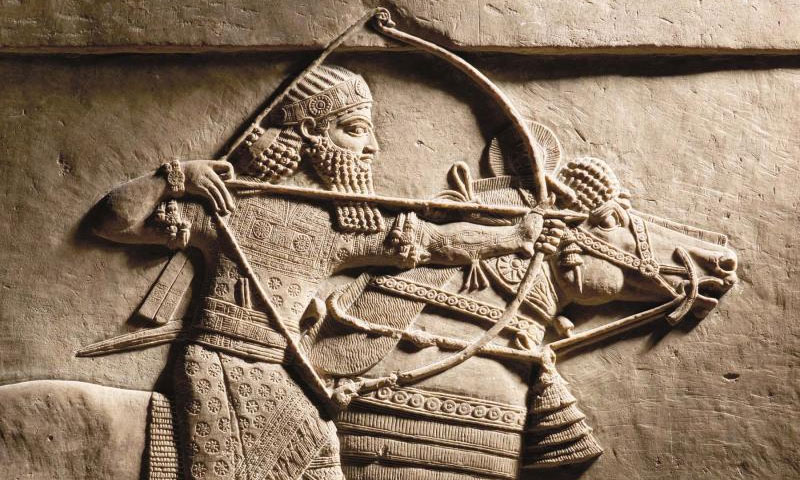



The first of April of this year marks Akito Brikho, the 6769 Syrian New Year in the Assyrian calendar, which Assyrian people celebrate for 12 days. Despite the uniqueness of these rituals and their rich historical value for Syria, most Syrians only know little about them.
Assyrian roots date back to the Assyrian Empire, which ruled Mesopotamia before the advent of Christianity for about 2,500 years. Their civilization brought customs and traditions associated with their interpretation of divinity and the greatness of nature. Many of these beliefs have been eliminated after their conversion to Christianity since the first century AD. However, their unique ruins and heritage stood the test of time, offering an account of their ancient past.
Poet and historian Said Lahdou told Enab Baladi that the Christian religion put these customs in the category of “pagan beliefs”. However, they have turned into “ecclesiastical expressions and rituals that have come to be regarded as sacred.” This occurred in a similar manner to ecclesiastical offerings and hymns, which emulate ancient traditions and prayers to the ancient gods, through music and song, as well as “the feast of the Virgin, blessing the ears of wheat” which dates back to the Goddess of Fertility, Ishtar.
The Assyrian Democratic Organization (ADO) Youths, which is active in Syria, gave Enab Baladi an example of customs practiced by Syriac-speaking village girls, called Hanu Hanu Qiritho. Each year, on the Sunday preceding the Great Fast of Lent, they make a doll and parade it through the village, collecting grain, eggs, ghee, and meat as they sing. After the parade, they cook the food, eat it as a blessing, and then bury the doll.
The ritual is rooted in the myth of a king who triumphed over his enemies, having vowed to sacrifice the first person he sees upon returning from battle as an offering to the gods. As his fate would have it, the first person he met upon his return was his daughter, the brave knight Hana, who accepted her destiny after being given her forty days to celebrate victory with her companions.
On the eleventh day of the Akito, which is rooted in the myths of Creation and Fertility, takes place the tradition of Solafa, for marriage. In this ritual, brides go house to house, collecting gifts and distributing them among themselves.
On the first days of the feast, women also go out to collect some dew formed on leaves, and use it to dilute milk after a harsh winter in which milk is scarce. This relates to the myth of Ishtar, the goddess of fertility and the renewal of life, when her beloved Tammuz returned from the realm of the dead.
Even popular dances carry special meanings in their gestures, which reflect people’s lived experiences, such as the harvest, the vines, weddings and other celebrations, said writer Said Lahdou.
There are many religious holidays that bring together Syriac and Assyrian communities today, according to Lahdou, including the Day of Annunciation (Christ’s conception in the Virgin’s womb), Christmas and New Year’s Eve.
Other shared holidays include Palm Sunday (The day Christ entered Jerusalem), Easter (Christ’s resurrection) and the fast of Nineveh (which dates back to the fast of prophet Jonah’s people, asking for mercy from God). While other rituals and festivals are unique to each sect, in isolation from other denominations.
One of the most unique holidays is Hanu Qiritho, an ancient heritage holiday resembling the ritual of invocation of God for rain. However, this holiday has “lost its meaning today,” as Lahdou put it, as the Assyrian populations decreased in their areas due to migration.
Every year, according to the ADO Youths, Assyrians commemorate those who lost their lives in the massacres that targeted them. These include the anniversary of the 1915 massacres of Sifu on April 24, and the anniversary of the Assyrian martyrs on August 7, in which all “Assyrian martyrs wherever they are, and at any time in history,” are commemorated by lighting candles in houses, streets and public square, and setting up artistic evenings that are suitable for both occasions.
In our current times, filled with conflict and hardship, a large number of Syrians have suffered the bitterness of displacement and loss of belonging, confronted the issues of identity and self-discovery. However, our rich history remains our strongest weapon to survive the bleak present of ours, along with our civilization.
if you think the article contain wrong information or you have additional details Send Correction